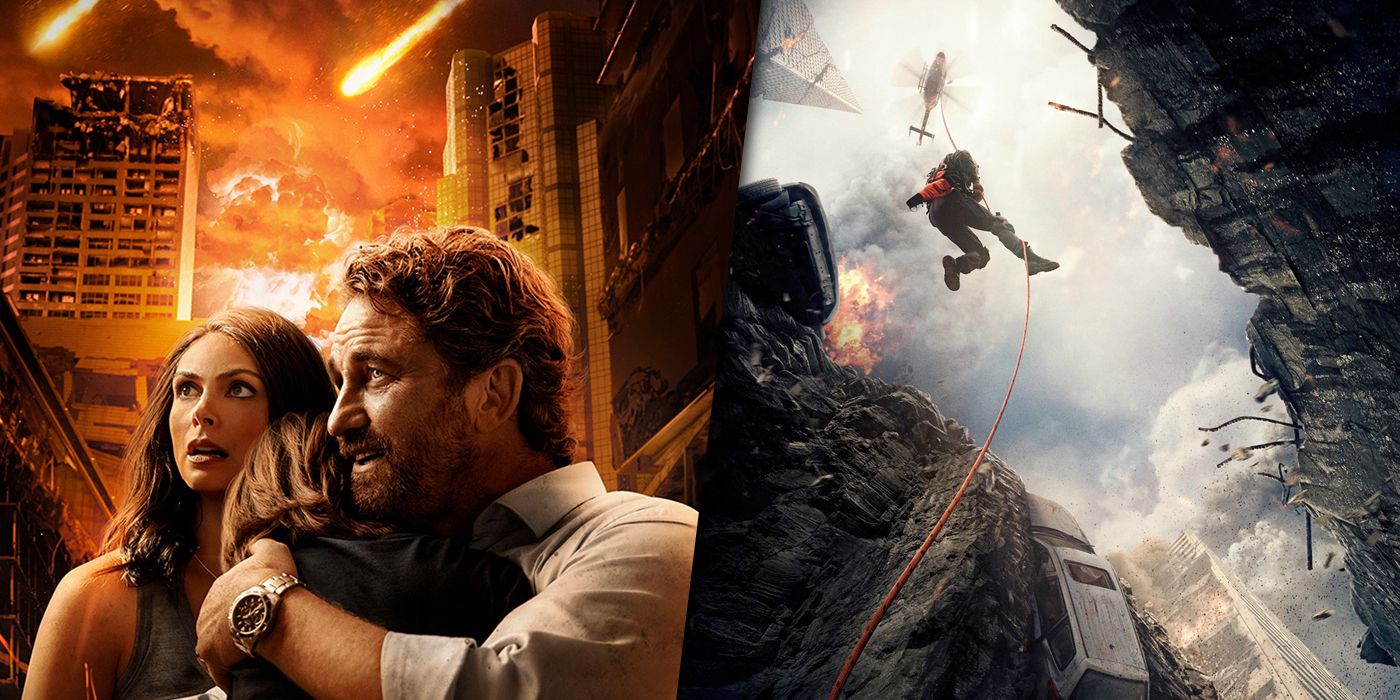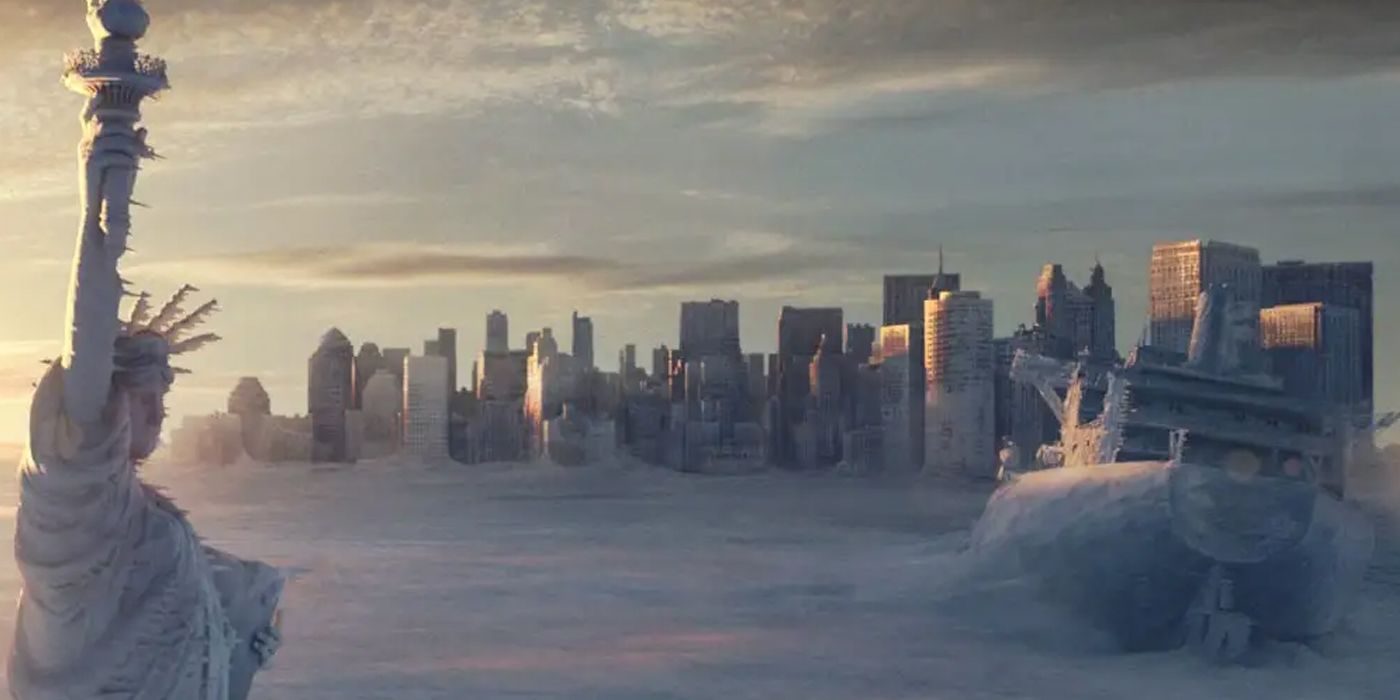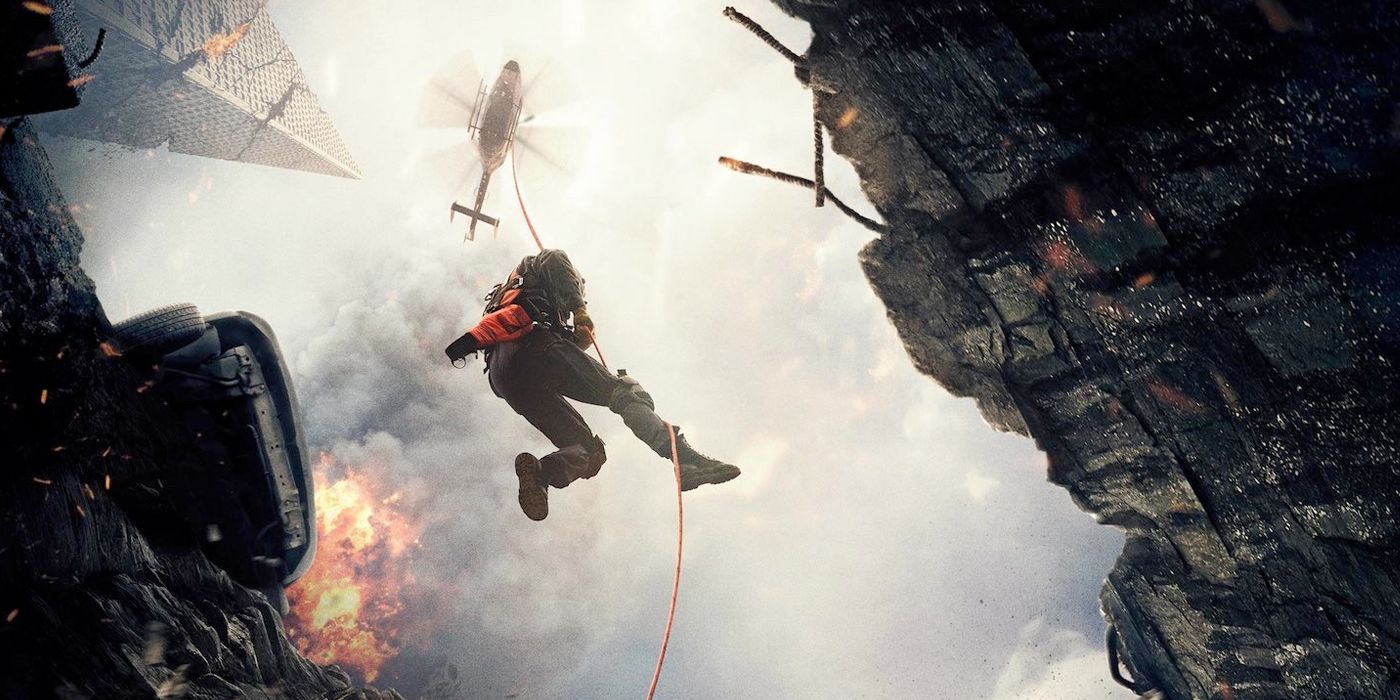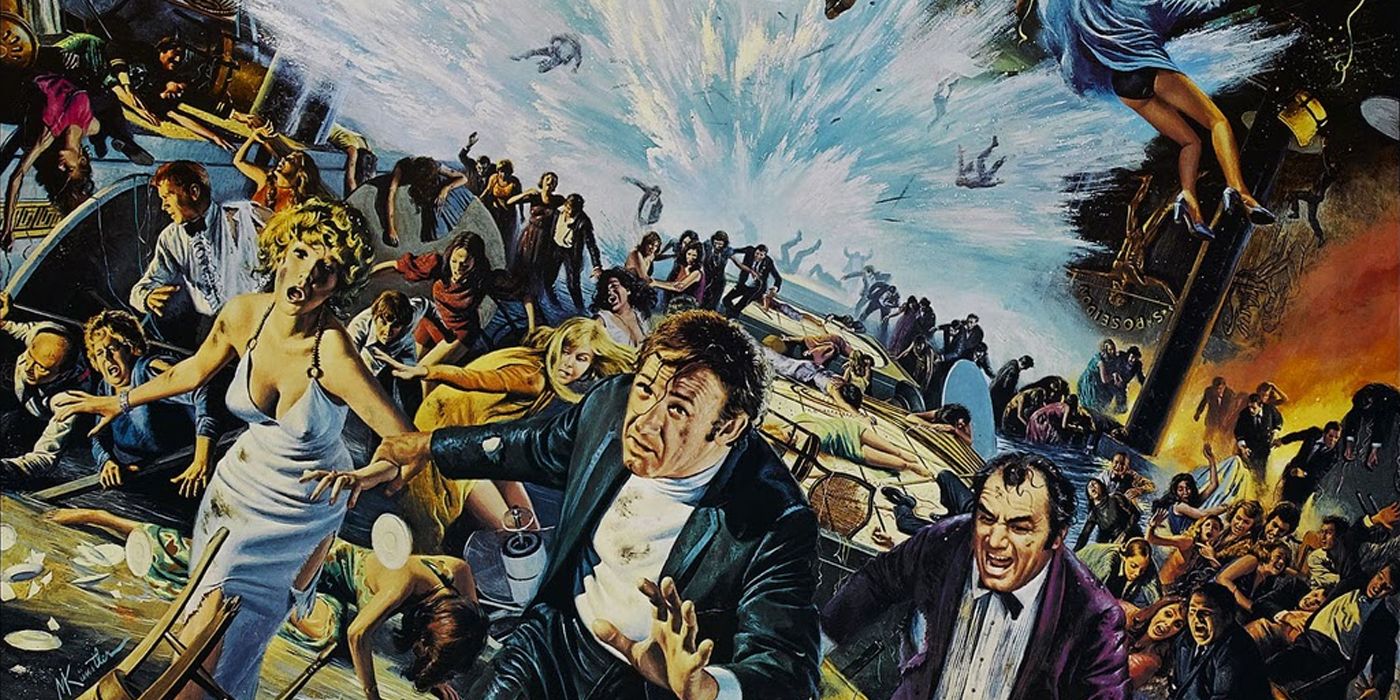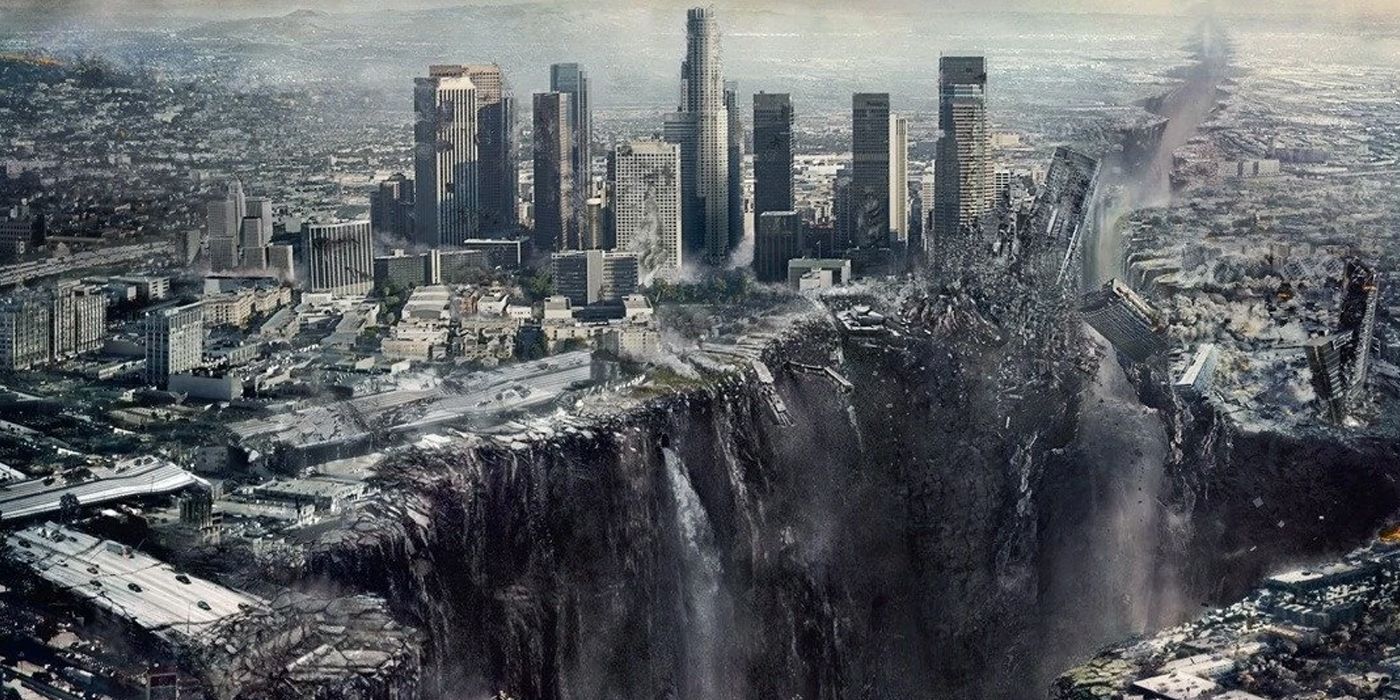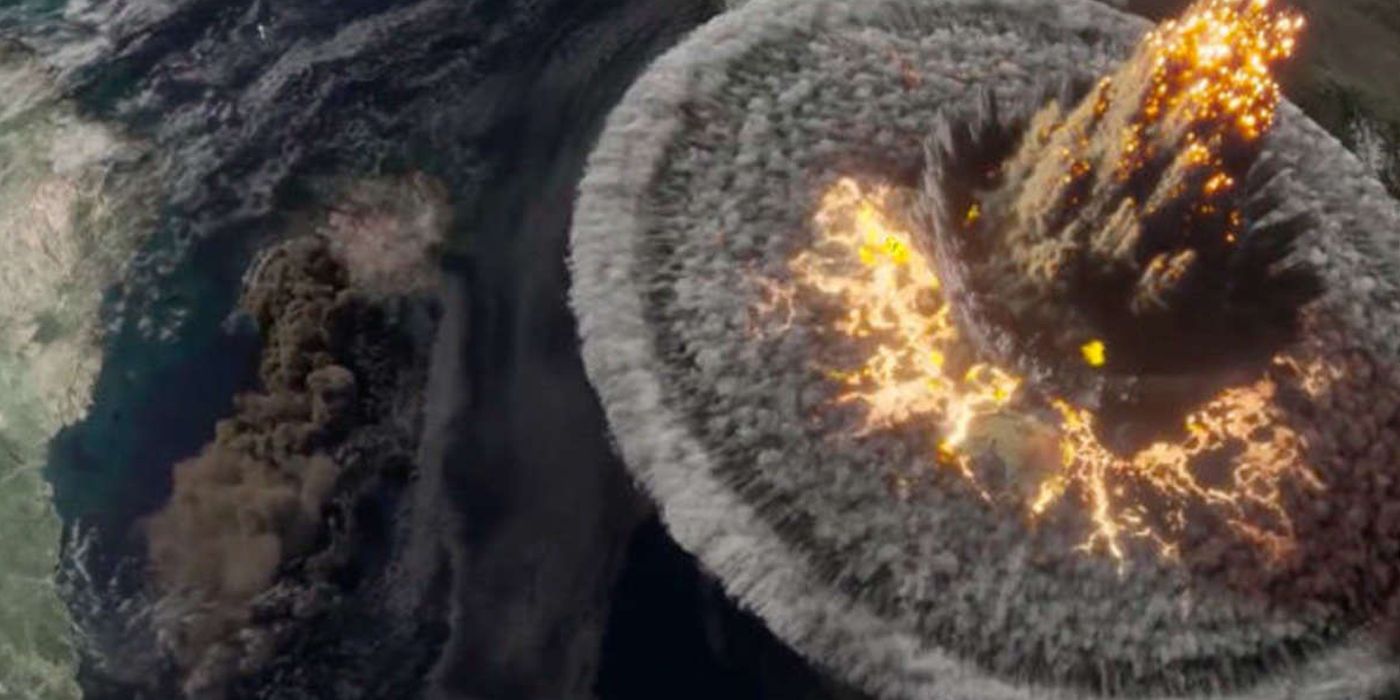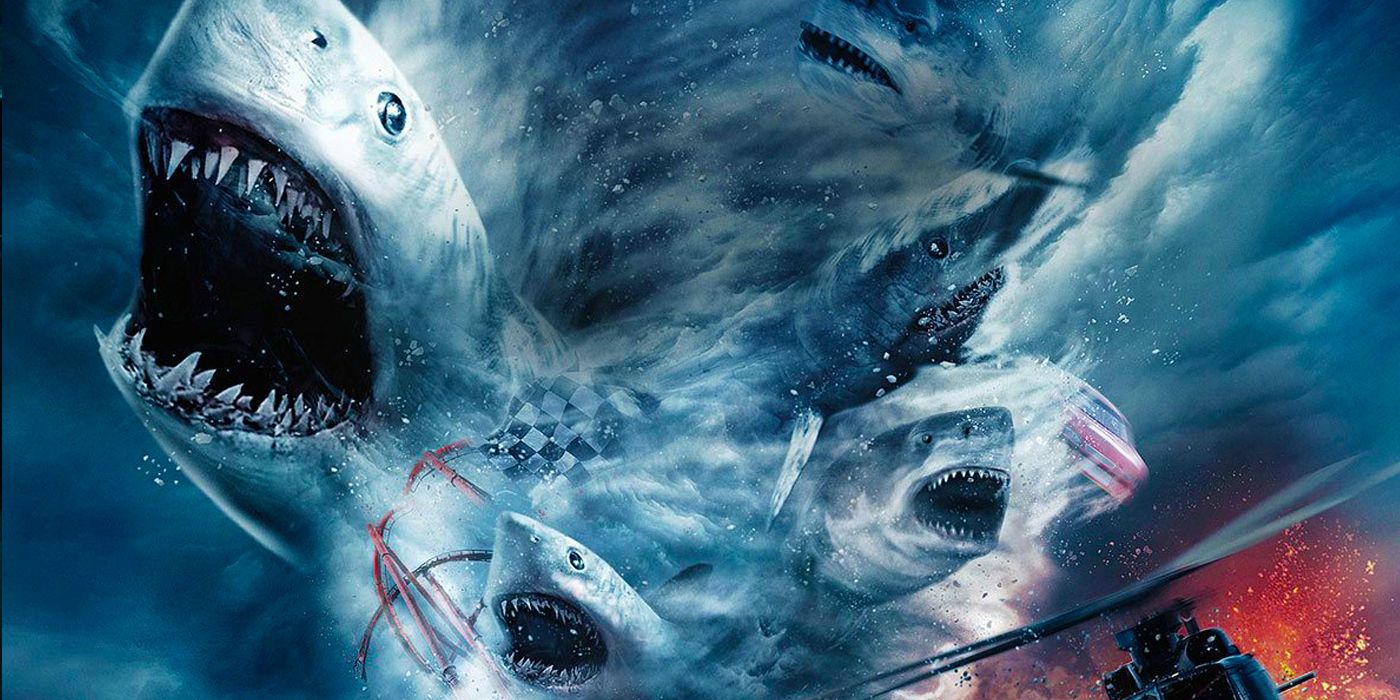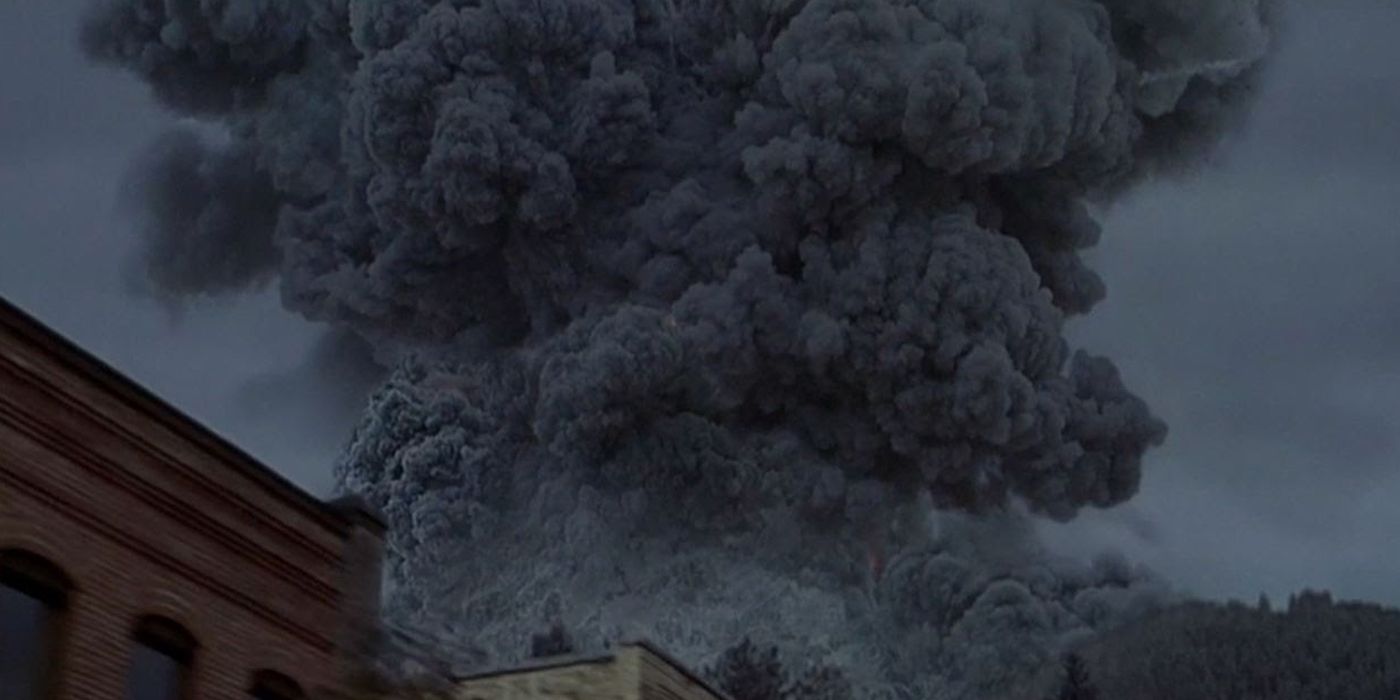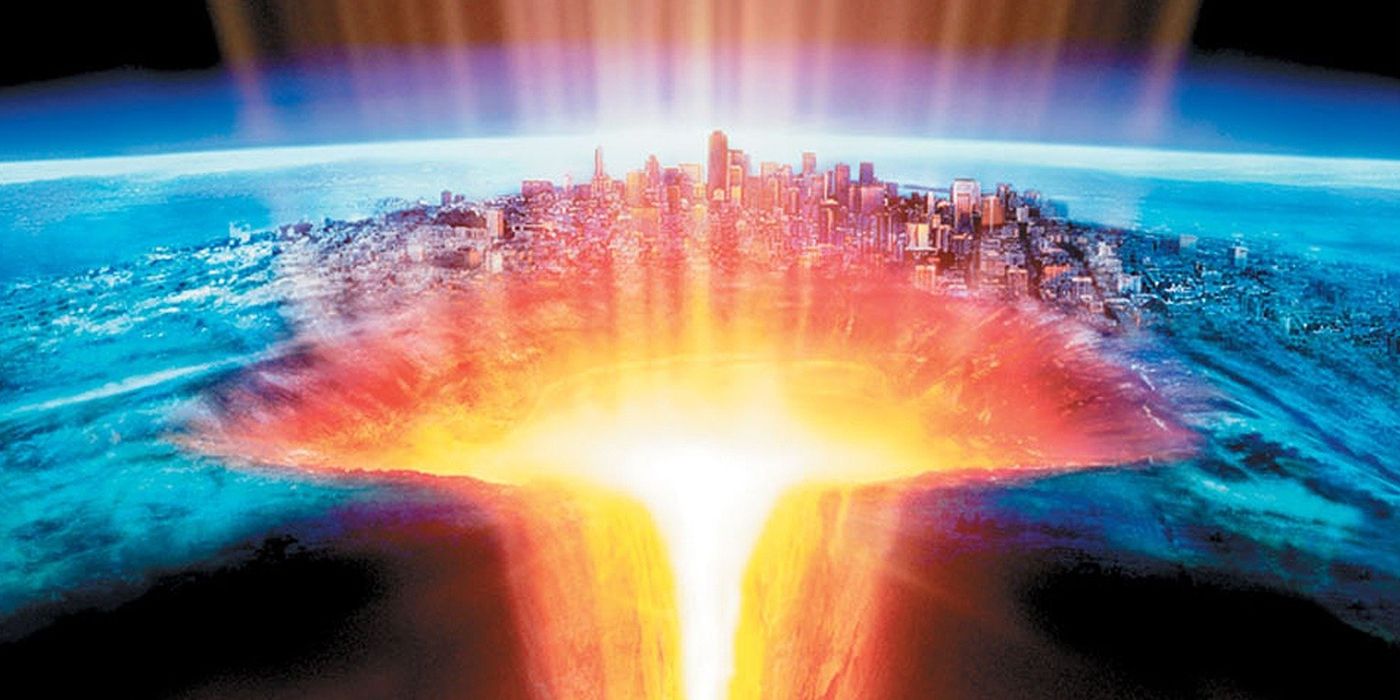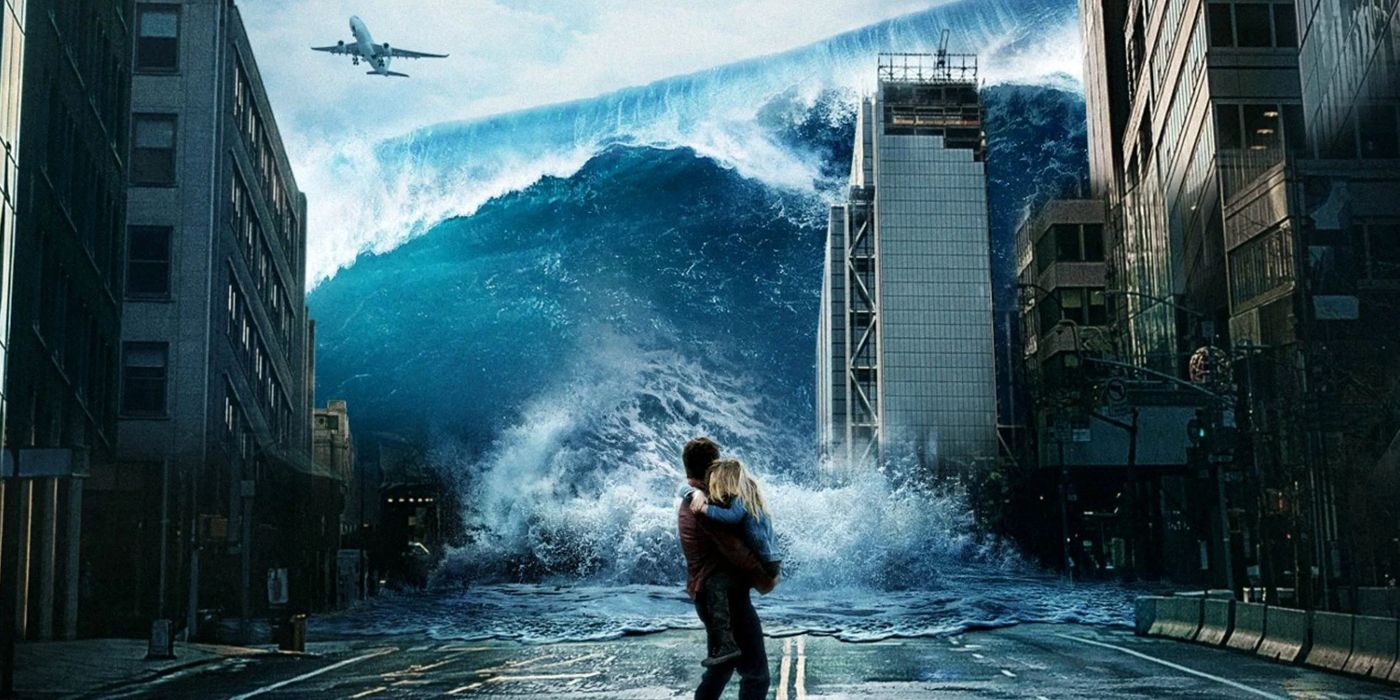The disaster movie genre has continued to grow over the years as advancements in technology have provided filmmakers the ability to tell huge global stories about natural disasters and accidents that impressed audiences in theaters and continue to bring in new fans to the genre.
And while the new technology and filmmaking techniques have resulted in some of the most believable disaster movies in the genre that can compete with the classic 70s and 80s movies that launched the genre, there are still quite a few disaster movies that abandoned the science of science-fiction to become more ridiculous than believable.
10 Believable: The Day After Tomorrow Had A Massive Storm That Kicked Off A New Ice Age
Roland Emmerich directed 2004's The Day After Tomorrow which explored the consequences of climate change when the timeline of danger is dramatically increased due to the development of three massive storms that form a continental super storm cell.
The movie accurately explored the problems that would develop if the powerful worldwide currents of the ocean were disrupted by global warming, causing worldwide disasters ahead of a developing new ice age. While the effects of the storms were exaggerated and sped up for higher stakes, the reality is an all too real look at the dangers of climate change.
9 Ridiculous: San Andreas Is A Believable Disaster Filled With Ridiculous Action Moments
2015's San Andreas from director Brad Peyton explored a real-world potential disaster as the long-predicted San Andreas Fault began to shift and caused a series of earthquakes along the fault line, destroying cities like Los Angeles and San Franciso.
While the actual disasters that occur during the movie are incredibly believable, it's the various action-packed helicopter rescue scenes from star Dwayne Johnson as he attempted to both save and reconnect with his family that really pushed the boundaries of belief.
8 Believable: The Poseidon Adventure Followed Survivors On A Capsized Cruise Ship
The seventies saw the release of quite a few hit disaster movies that further laid the foundation of the genre with movies that included 1972's The Poseiden Adventure from director Ronald Neame and legendary producer Irwin Allen, who became known as the "Master of Disaster."
After a cruise ship is hit by a massive wave on New Year's Eve and capsizes, a group of survivors is forced to climb through the destroyed remains of the ship to seek rescue on the underside of the boat. The Poseidon Adventure may be hampered by the effects of the time, but still Stella a much more believable tale than the 2006 remake Poseidon.
7 Ridiculous: 2012 Was Called The Most Unrealistic Sci-Fi Movie By NASA
Roland Emmerich is a frequently seen name in the disaster genre, so it was no surprise to see him behind the camera for 2009's 2012, which explored predictions focused on the end of the world that coincided with the rumored (though inaccurate) end of the Mayan calendar.
2012 featured an over-the-top series of disasters caused by neutrino particles from a solar flare that were heating the core of the Earth. This was incredibly scientifically inaccurate and was officially called out by NASA as one of the most unrealistic sci-fi movies by an official declaration of facts to counter the falsities of the movie's premise and other online discussions.
6 Believable: Greenland Explored A Comet Hitting Earth As Humanity Fought To Survive
2020 saw the release of Greenland from director Ric Roman Waugh, which explored the sudden threat of what was thought to be an interstellar comet that would pass by Earth but was revealed to be a large cluster of comets heading straight for the planet.
Greenland's numerous devastating impacts were both realistic and terrifying, but the real horror came from humanity's response to the sudden evacuation and a family's chaotic journey to safety that really highlighted a believable end-of-the-world scenario that doesn't always come with a happy ending.
5 Ridiculous: Sharknado Combined A Natural Disaster With A Predator For Laughs
Sharknado was a made-for-TV movie that first aired in 2013 and blended the natural disaster and killer animal genres when a powerful waterspout in the ocean carries a number of sharks to downtown Los Angeles, which is flooded with sharks before the actual Sharknados form to further endanger the heroes of the movie.
The premise of Sharknado was already geared towards the ridiculous, though that was only further strengthened by the ongoing sequels that created a six-movie franchise that traveled to space and even included time travel.
4 Believable: Dante's Peak Depicted A Realistic Volcanic Disaster Like Mount St. Helens
A volcanologist attempts to warn a quiet and beautiful town of looming danger from their volcanic mountain in 1997's Dante's Peak from director Roger Donaldson, which accurately depicted a U.S. Geological Survey team's response to the eruption and featured a number of amazing and devastating moments that were partially inspired by the eruption of Mount St. Helens.
However, while the various environmental disasters that occur in the town of Dante's Peak caused by the volcanic eruption were realistic and scientifically accurate despite accelerated timelines, they were accumulated from different types of volcanoes that might not have been present in the eruption seen in the movie.
3 Ridiculous: The Core Abandonded Science To Travel To The Center Of The Earth
2003's The Core was directed by Jon Amiel and followed a team of scientists and experts as they developed a plan to travel through the center of the Earth to restart the Earth's molten core after a series of global disasters revealed the planet's magnetic field was failing.
While the actual disasters caused by the depleting magnetic field and stagnant molten core approximated the real-world consequences, there were numerous scientific inaccuracies and stretches that involved the creation of a new metal called unobtanium that was required to facilitate the actual trip through the Earth.
2 Believable: Contagion Explores A Global Pandemic That Might Feel A Little Too Real
Steven Soderbergh directed 2011's Contagion, which featured an ensemble cast that dealt with a deadly new respiratory virus and the Center For Disease Control's investigation and handling of the ensuing global pandemic that cost over 2.5 billion deaths.
Contagion was always acknowledged for its accurate depiction of a global pandemic, but the recent covid pandemic that began affecting the world in 2020 further proves how believably this disease-based disaster movie depicted the tragic consequences of a world caught unprepared for a deadly virus.
1 Ridiculous: Geostorm Featured Global Disasters Created By Weather-Controlling Satellites
2017's Geostorm is potentially the worst offender when it comes to science-based disaster movies as there is little science involved in the movie beyond the sci-fi premise of malfunctioning global weather-controlling satellites that cause a number of disasters.
The movie features over-the-top disasters that sometimes aren't even related to the weather systems controlled by the satellites mixed with a conspiratorial scheme that involved plants to create a global geostorm (not a real thing) that would destroy Earth for no reason at all.

